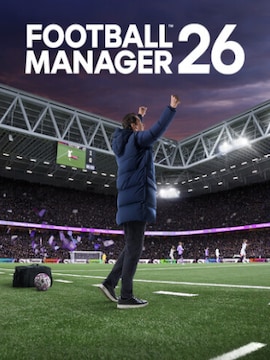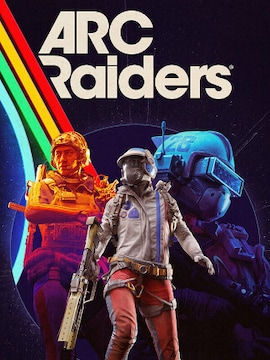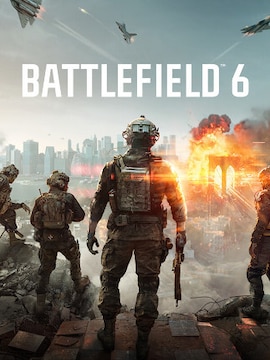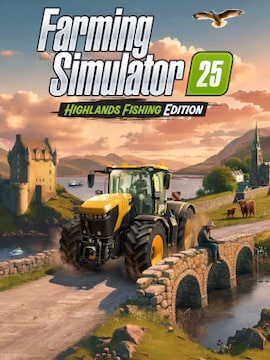Clair Obscur: Expedition 33 has taken the world by storm, so you might be hearing a lot of interesting things about it… and also, possibly, some which might be confusing or inducing choice paralysis.
If you’d like a bit of encouragement to help nudge you towards joining the expedition, read on — this is our “cheer you on” guide with some things to know and bear in mind during the opening hours of the game.
Dodges can teach you parries
Clair Obscur is heavy on active defenses (although you can eventually build towards straight-up tanking), and you won’t even get out of the prologue before trying half of them. In the long run, you should definitely focus on parrying, but it’s a “high risk – high reward” kind of move, and if you get it wrong, you’re going to lose a hefty chunk of your HP.
There is, fortunately, a handy trick to mastering this, and it will serve you well long into the game. Learn to dodge REALLY well. Clair Obscur does inform you of this, but it can get lost in all the flair and spectacle: Parries share the timing with Perfect Dodge.
Once you’ve mastered the art of avoidance, you can use your newly forged instincts with the Parry button to try and sneak these sweet, sweet counterattacks in.
Don’t worry about stats
Once you start getting experience and levels, you’ll also get to invest in your characters’ attributes and skill trees. Each weapon has different scaling, which means it works with some attributes better than it does with others, not unlike weapons in Souls-likes.
We’re here to tell you that it’s fine to spread the stats evenly or based on vibes until you get into the later stages of the game and have a better idea of each character’s inherent mechanics.
Most OBLIGATORY encounters at default difficulty are perfectly doable without optimization, so you don’t need to worry about it.
By mid-Act II you’ll have a nice arsenal of weapons worth considering for your late-game builds, so that’s when it’s best to start using use some of those respec items. Speaking of…
Recoats are plentiful, but limited
If you choose to play around with different stats distribution or check different skills, you’ll need an item called “Recoat”. It’s not very hard to come by, but it’s also a resource with a fairly limited reliable supply.
As a result, while you certainly can afford to use it a few times before the endgame, it’s probably better not to overuse it early on, or you’ll have less to play with later.
It’s also worth pointing out that it’s better to use Recoat on attributes than on skills. There are enough skill points in the game to have all the abilities at level cap, so unless you’re very unhappy with your current choices, all you need to do is keep getting EXP.
Chromatic enemies
Early on in Act I you’re likely to come across an enemy called Chromatic Lancelier. It’s not immediately obvious, but it’s the first in a category of optional minibosses which will remain a substantial challenge for the entire game.
Since they often give a heap of experience and frequently gate access to valuable resources and collectibles, beating them is always worth a shot, but Chromatics are an elite, buffed up version of their non-chromatic counterparts.
All that’s just to say that getting one-shot by the Chromatic Lancelier is pretty much an intended experience at that stage. You can move on and come back later… or use it as a training dummy which punches back. It is possible to beat it. You have the damage output. You just need to not get hit.
Future chromatics might not be so kind when you first find them.
Your level is important
Although the game doesn’t do overt level gating and technically you can beat most enemies if you’re good enough at not getting hit, many encounters are going to be prohibitively challenging if you approach them a few levels short.
A good rule of thumb is that if your entire party’s damage output amounts to maybe 1% of the enemy’s health bar, you should skedaddle and come back at least 3-5 levels later. Some foes are available very early on, but effectively unbeatable at low levels, at least without a very long battle with no margin for mistakes.
Unfortunately, enemy levels are not communicated to players, so there will be some trial and error involved in figuring out which challenges you’re ready for.
Exploring the levels is really worth it
Most maps in Clair Obscur are full of branching and looping paths, and most of these paths offer something interesting. Although there’s no minimap to tell you in a clear way what’ the main path and what’s a branch, usually you can tell one from the other by the lighting directing you towards main objectives.
So when you see the light… start looking around. Off the beaten path lie optional bosses, pictos, currency, merchants and collectibles, and you’re going to want to get them all.
Take notes
While we’re at it: occasionally you will not be able to get everything when you visit a location for the first time. It’s a good idea to take notes of everything you can’t do right now. If you’re playing on Steam, the overlay even has a dedicated notes app.
Here’s a few things you might want to write down for future reference, complete with their general location and the nearest bonfire flag:
- these rocky spikes with blue veins – they eventually become destructible
- merchants with wares you didn’t have enough chroma to purchase
- optional bosses – such as chromatics
- locations you were under-leveled for
- the state of extended quests – missing children, journal deliveries
- Petanks you couldn’t defeat fast enough
Gamepad is going to be helpful
Clair Obscur might have turn-based combat, but most of its menus and exploration mechanics are designed to be convenient for gamepads, rather than mouse and keyboard. It’s by no means unplayable this way, the only quick responses needed are the defensive options, but the flow of controls might just not be optimal.
Pay attention to your pictos
The big draw of the pictos are the abilities they grant, drastically expanding your characters’ options, but they have another function which must not be overlooked. They provide substantial buffs to your secondary traits: Health, Defense, Speed, and Critical Chance.
Many of them will get gradually leveled up over the course of the game, evolving to give better bonuses in addition to their set functionality.
If you’re worried about losing the helpful passive abilities, you can always use your Lumina points to activate them once you meet the requirements.
Diversify your damage
There aren’t all that many damage types in the game, but it’s a good idea to make sure your characters have reliable access to at least two of them. Eventually you’ll encounter an enemy who’s healed by one element or another, which could make a single-element build completely useless.
It’s especially important for abilities, because they are most likely going to your main source of damage and extra effects. Having access to two or more damage types across your base attack and six core skills is going to be a lifesaver.
Conclusion
This concludes our list of ten tips which might make your first hours in Clair Obscur: Expedition 33 a little bit easier and free from mechanics-related doubt. You’re ready to begin your journey into this incredible story and phenomenal combat.
We did this for those who come after.










